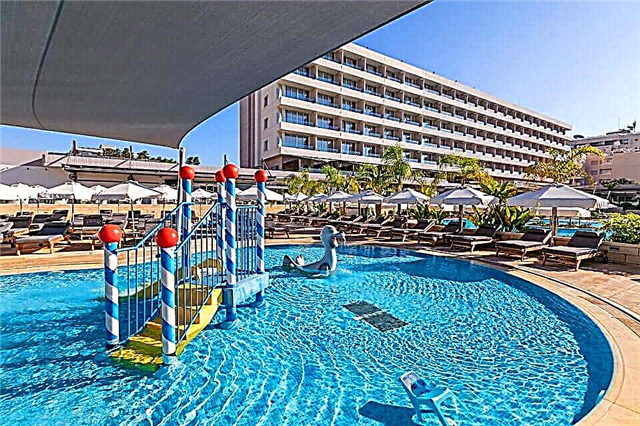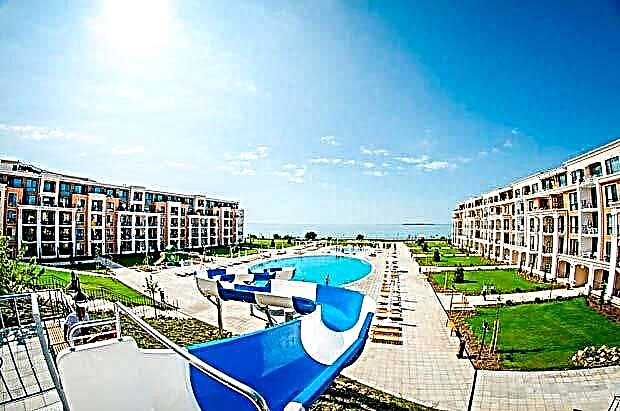Raphael's four stanzas are open to the public in the Vatican Palace. They are best known for the amazing frescoes painted by Raphael and his talented students. Along with Michelangelo's ceiling frescoes in the Sistine Chapel, these are the most outstanding works dating back to the Renaissance. Initially, the stanzas were the personal apartments of Pope Julius II, who did not want to occupy the same rooms that once belonged to the representatives of the hated Borgia family.
It was he who invited Raphael, at that time a relatively young artist from Urbino (he was only twenty-five years old), to completely change the interior of the rooms. With the death of Julius in 1513, Leo X became Pope. He continued to control the decoration of the rooms, but, unfortunately, the great artist also passed away. The frescoes were finished by Raphael's students - Gianfrancesco Penny, Giulio Romano and Rafaellino del Collier. Thus, each of the walls is decorated with a fresco composition, there are, respectively, four of them per stanza.
Stanza della Senyatura

The Stanza della Senyatura contains the most outstanding frescoes by Raphael. All of them, except for the first Vatican work of the great artist, belong to the beginning of the Renaissance period. The name of the stanza literally translates as “signature room” - until the middle of the 16th century, the pontiff held meetings here and signed important documents. Initially, however, it was used by Julius II as a library and private office, as eloquently narrated by the frescoes painted between 1508 and 1511. They reflect the three greatest aspects of the human spirit: Truth, Goodness and Beauty. Supernatural Truth is illustrated in the "Dispute", and the Reasonable Truth - in the "School of Athens."
Good is represented in Virtue and Law, and Beauty in Parnassus. The School of Athens is rightfully considered one of Raphael's greatest works. The artist depicted prominent philosophers (about fifty characters) on the canvas, placing Aristotle and Plato in the center: the first points downward as a sign of connection with the earth, the second - raises his hands to him.
On the most beautiful fresco "Parnassus" Raphael painted Apollo playing the lyre, and nine muses with talented writers: Homer, Dante, Horace, Ovid, etc. During the reign of Leo X, the room was used as a study or music class, here he kept his musical instruments ... The furnishings of the times of Julius II were replaced by Fra Giovanni da Verona. He covered all the walls with wood.
Stanza d'Eliodoro

This stanza was originally intended for the private audience of the Pope and was decorated immediately after Raphael finished his work on Senyatura. The images of the frescoes are filled with one idea - faith in God's miraculous protection of the church. On the ceiling are four episodes of the Old Testament - all written by Raphael himself, while some works by Luca Signorelli, Bramantino, Lorenzo Lotto and Cesare da Sesto remain in the grotesques and arches. The fresco "The Expulsion of Eliodor" gave the stanza its name - it depicts the heavenly horseman expelling the Syrian Eliodorus from the temple in Jerusalem.
In another work, Mass in Bolsen, an amazing miracle is shown - the hands of an unbelieving priest were stained with blood. Another fresco - "The Liberation of the Apostle Peter" - tells about the release of the Apostle from prison. The work is divided into two parts: in the right, Peter escapes from the dungeon, led by an angel, in the left - the awakened guards raise the alarm. Art critics agree that the work on the light has been colossal. Refraction of rays and shadows, flickering of flame, blinding darkness - it's hard to imagine what one person wrote.
Stanza del Incendio di Borgo

During the time of Julius II, the stanza was used as a meeting room for the High Court of the Holy See, presided over by the Pope. This is evidenced by the frescoes on the ceiling by Pietro Vannucci. During the time of Leo X, the room was used as a dining room, and Raphael was commissioned to paint the walls, who, however, entrusted most of the work to his students.
The frescoes took three years to complete, from 1514 to 1517. The frescoes illustrate the political aspirations of Leo X through the narrative of the lives of two previous Popes of the same name: Leo III ("Coronation of Charlemagne by Pope Leo III") and Leo IV ("Fire in Borgo" ). In all episodes, the Pope is depicted with the face of the then reigning pontiff Leo X. It was thanks to the work “Fire in Borgo” that the stanza gained its name, and the fresco itself reflects an ancient legend, according to which Pope Leo IV managed to tame the flames and protect the townspeople.
Stanza Constantine

A room designed for receptions and other official events. After the sudden death of Raphael in 1520, it was completed by his students on the basis of sketches and previous works of the artist. The Stanza was named after Constantine, the first Christian emperor, who officially recognized the Christian faith and gave the rest of the freedom of religion.
The wall paintings reflect four episodes from the life of the great ruler: evidence of the defeat of paganism and the triumph of the Christian religion, the battle with Maxentius - the tyrant-invader and the vision of Christ, the baptism of Constantine and the donation of Rome. The original wooden roof, erected under Pope Leo X, was replaced by a decree by Gregory XIII with modern roofs. They were decorated already by the decree of Pope Tomaso Laureti, depicting the victory of Christianity in the center. The work was completed at the end of 1585 under the direction of Pope Sixtus V.
Where is it located and how to get there
Raphael's Stanzas occupy four rooms of the Palais des Papes in the heart of the Vatican. Exact address: 00120 Vatican City, Papal See, Apostolic Palace, Apostolic Palace.
Metro: Line A towards Battistini, Ottaviano and Cipro stations.
Buses: No. 49 - stops in the square opposite the Vatican Museum; No. 32, 81, 982 - stop Piazza del Risorgimento.











